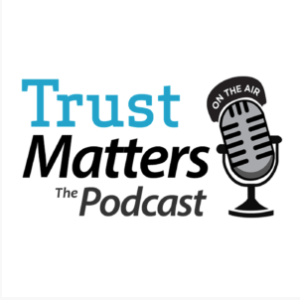 Two days ago I wrote in Part I how trust is not necessarily as slow to be gained, or as quick to be lost, as we think. Part 2 is about how you recover lost trust.
Two days ago I wrote in Part I how trust is not necessarily as slow to be gained, or as quick to be lost, as we think. Part 2 is about how you recover lost trust.
Sometimes trust recovery is confused with reputation management; or with apologies; or with legal maneuvers. Any or of all of those may be appropriate in a given case, but only one is critical to all—acknowledgment.
At root, trust betrayal is a fundamental lie about intentions. When umpire Jim Joyce made a bad call to rob Andre Gallaraga of a perfect game, he told an “untruth,” but his act was clearly out of sync with his intentions. It is not hard to clarify intentions, if they were in fact clean all along.
By contrast, when a preacher or politician fulminates against moral turpitude and is then caught in a compromising position with a prostitute, he has lied about his intentions. In his case, the fact proves his bad intentions.
In the first case, acknowledgement means stating exactly what happened, and taking full responsibility. Umpire Joyce saw the replay, and immediately stated he was wrong. Of the opposing players, he said, “I don’t blame them a bit, I would’ve said it myself.” He went directly to Galarraga to acknowledge and apologize.
In Joyce’s case, an apology was clearly warranted. That’s not always the case; it may not be appropriate to apologize for something someone else did (unless in a the chain of command); it can come off as insincere, or patronizing. But what is required—always—is a full acknowledgement of precisely what happened, and a statement of accountability where that is clear.
The same rule applies in the case of an errant preacher or politician, or to BP for that matter regarding the oil spill. Leaving aside apologies and reparations, what is absolutely necessary for trust recovery is a full accounting of what happened, and to the best of one’s ability, why.
Until our motives are re-aligned with our actions, we are stuck in a state of un-trust. Acknowledgement is what re-establishes the linkage.
Name It and Claim It: The Language of Trust Recovery
The reason trust recovery is hard is that it requires soul-searching of our motives. We hate to admit we might have had bad motives, that and: that we acted from bad faith. Yet that is what is required.
If you name it, you can claim it. What I mean by that simple phrase is that acknowledging the truth (“naming it”) is a necessary condition for recovering trust (“claiming it”).
There is a simple grammatical rule for successfully doing Name It and Claim It, and it looks like this:
List as many caveats as are necessary to slightly overcompensate for what you’re about to say—then say it.
Caveats, in this case, are made up the things both of you are afraid to say.
Let’s take a simple example first, then build up to the situation facing Joseph and Suzanne (see Part 1). (More examples can be found in another article, A Tool for Emotional Risk Management—Name It and Claim It.
Let’s say you are going to mention price for the first time in a sales meeting, and you’re a little nervous about it: You might say:
“I realize this is a little early to talk price, we haven’t mentioned value yet, and you haven’t asked about it, but in my experience sometimes one of us might feel embarrassed if it turned out later that our expectations were mis-aligned; so at the risk of putting something out there, I’m thinking this is a low 6-digit project. Does that feel wildly at odds with what you were thinking? Are we off by an order of magnitude?”
What you have done in such a case is to state all your inner fears (and the client’s too) out loud, in a way that recognizes each of you feel a little risky here, together. The effect, oddly, is to neutralize the risk. Because having said these words, the worst thing the client will do is say, ‘Well, that is a little embarrassing, and we didn’t ask about it, and I don’t want to tip our hand just now by talking about it, so, no thanks.” That may feel harsh, but it’s far better than not saying anything, and finding out two meetings later that one of you was thinking one million and the other 75,000.
It’s also rare; almost always, the other person is grateful for the mention. The much more likely response is, “Well, glad you mentioned that actually, it takes a bit of pressure off. And we’re not conceding anything, but yes, I think we’re in a range where we can comfortably keep talking. Thanks for making sure.”
What Name It and Claim It does is to take a risky situation and not only defuse it, but actually create trust by doing so. Because the shared experience of taking a risk creates a track record of trust. The next risky overture will be more welcomed because of the risk taken in the first instance.
Name It and Claim It and Trust Recovery
What would it sound like for Joseph and Suzanne to use Name It and Claim It to recover trust in their respective situations (see beginning of case)?
Joseph can set up a conversation with a key client individual in his client organization; probably off-line, one-on-one, after-hours, over drinks or a meal. Not too far into the conversation, Joseph might say something like this:
Look, Bob, I appreciate your coming to dinner tonight; you might have guessed I had something specific to talk about. I feel a little risky raising a delicate issue with you, an issue that has some history, and I suspect it’s not all comfortable for you either.
I want talk about what happened between my predecessor Bill and your organization. I don’t fully know what happened, and if you wouldn’t mind, I’d really like to. I have no axe to grind, no horse in this race; I have no requests, hopes or expectations; I look for no promises. I simply want to fully understand where you are coming from, from your perspective alone.
I fear that if I don’t understand that, then we’ll never have a basis for working together again. I apologize in advance for any discomfort this causes you, and hope you will see my intent simply to learn. Maybe we can’t put this behind this, but maybe we can; I would feel remiss if I didn’t try.
Suzanne’s is a different case; in her situation, mistakes were made, and made by her organization and by her. She might say:
Melinda, thanks for taking this meeting. I realize it’s the first time in 18 months, and our last interactions weren’t happy. I’m not sure if you had resistance to even having this meeting, or whether you even felt comfortable telling people we were meeting.
I want to acknowledge the difficulty in our relationship 18 months ago, and my role in it. In retrospect, I was focused on assessing blame, rather than on focusing your needs as my client. The more time passes, the more I realize what a fundamental error in perspective that was.
It may not be easy for you to talk about without emotion—I’m not sure I could do so easily—but I would respectfully like to ask you to do so. I cannot fully say that I have understood your situation until I hear it from you. And I know that I can’t move along myself unless I feel I’ve understood things.
I’m not looking for re-admission here; that’s up to you. What I need to do regardless is to fully understand what things looked like from your perspective 18 months ago. Would you be willing to take some time with me now to fully understand our history?
Sometimes Trust Recovery is Beyond Language
A firm like BP that has incurred numerous safety violations is not going to recover trust until it convinces others that it has changed its ways. That means processes, procedures, standards, incentives, vocabulary and culture. Yet the role of acknowledgement still stands at center. Employees will not believe their own leadership if leadership does not stand and speak the new truth to the public.
Some companies fear that if they change, but don’t advertise the fact, then they will lose “credit” in the public’s mind. Thinking this way re-invites the same risky behavior that got them in trouble in the first place. The risk of being seen as good while doing not-so-good is far greater than the risk of doing good and being seeing as doing not-so-good. Time will take care of the second strategy, but events will undermine the first.
And twice-fallen, trust recovery is far more than twice as hard.


 Sometimes I get annoyed. Usually, that means I’m thinking like an idiot. Sometimes, however, it produces useful ideas.
Sometimes I get annoyed. Usually, that means I’m thinking like an idiot. Sometimes, however, it produces useful ideas. When it comes to trust-building, stories are a powerful tool for both learning and change. Our new
When it comes to trust-building, stories are a powerful tool for both learning and change. Our new  Two days ago I wrote in
Two days ago I wrote in 
